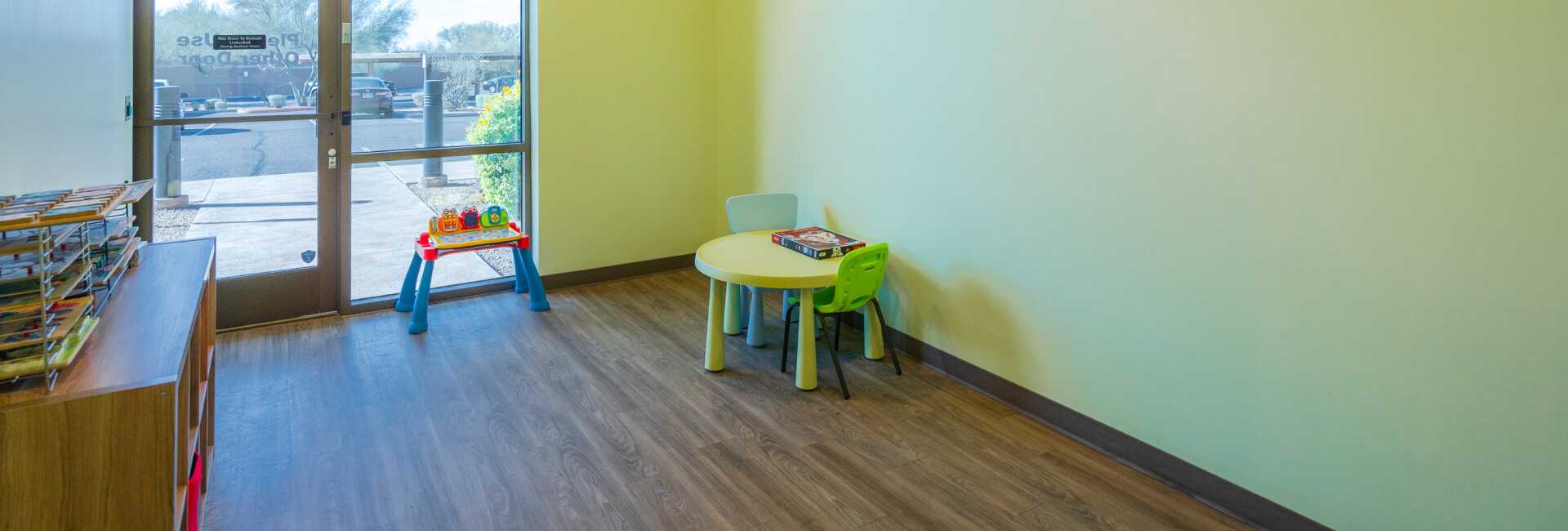When to Consider Speech Therapy for Your Child
Speech therapists, or speech-language pathologists, have advanced training in assessing and treating communication problems and speech disorders. This training enables them to help with a wide range of disorders, such as those involving:
- Articulation: challenges forming certain sounds
- Fluency: disrupted flow, speed, or speech rhythm
- Resonance: altered vibrations affecting voice quality
- Receptiveness: difficulty understanding and processing information from others
- Expressiveness: trouble conveying or expressing information
At Scottsdale Children’s Institute in Arizona, our team can help your child build the communication skills they need, even at a very early age. Here are a few signs your child could benefit from speech therapy.
Little or no babbling
One of the earliest signs of a language disorder can appear between 4-7 months of age. During this time of development, babies typically begin babbling and experimenting with sound. If your child seems oddly quiet, it’s worth speaking with your doctor.
Lack of gesturing
Like babbling, gesturing is an early form of communication in children. These behaviors typically begin between 7-12 months of age and often include actions like waving and pointing.
Every child is different, and that applies to their communication development, too. However, you should talk with your doctor if your child doesn’t use any gestures by 12 months, especially if they don’t interact in other ways, like smiling.
Difficulty with verbal requests
As children grow, they usually begin understanding words and requests as their communication skills develop. This can take some time, but they should have a general understanding of simple spoken requests.
This understanding should also extend to identifying common objects in pictures and in person. With these basic communication skills, they should be able to understand two-step requests, such as “Please pick up the doll and give it to me,” by 12-24 months of age.
Not making sentences
Similar to understanding verbal requests, a child should start learning and combining words as they continue developing and growing. For example, many children can say approximately 10 words by the time they reach 18 months.
By two years of age, they typically know 50 or more words. As they learn these words, they should start putting sentences together, often starting with two-word combinations, like “baby little.”
As a child’s comprehension increases, their vocabulary should as well. Between 2-3 years of age, it’s common to observe huge changes in speech, and they should begin using three or more words in sentences.
Challenged by certain sounds
It can be cute listening to children mispronounce new words or sounds. However, many children with speech disorders can struggle to pronounce certain letters. Children 1-2 years of age who have a speech disorder often incorrectly say the letters b, p, m, h, and w in words. And children 2-3 years of age who have a speech disorder often incorrectly say the letters k, g, f, t, d, and n in words.
In addition to having problems making certain sounds, sometimes children with a speech disorder are generally difficult to understand.
Fortunately, speech therapy can help your child build the language skills they need to communicate clearly and thrive at every stage of life. To learn more about your child’s speech or language skills, book an appointment online or over the phone with Scottsdale Children’s Institute today.





